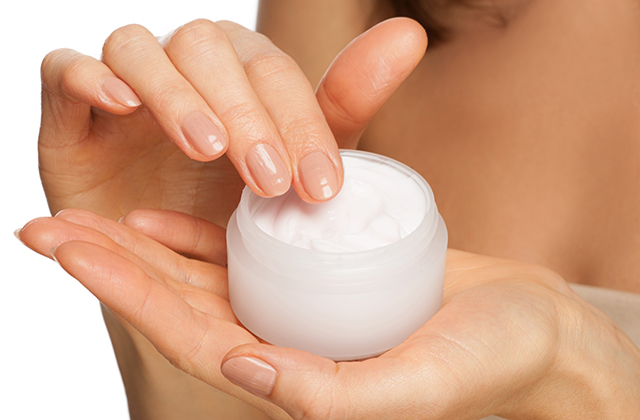Skin tightening treatment uses penetrative technology to reach deep into the layers of your skin to tighten it with heating and cooling energy. Remove stubborn fat bulges in a non-invasive, comfortable way with visible results after your first coolsculpting Melbourne treatment. Remove stubborn fat bulges in a non-invasive, comfortable way with visible results after your first treatment. Revlite Laser utilizes an extremely high-speed shutter to produce nanosecond pulse widths, enabling highly effective procedures with less heat and increased safety. Acne breakouts can be frustrating, and they can also leave scars on the face and other areas of the body. Some people find that acne scars are an unwanted reminder of a painful and bothersome condition. However, acne scars do not have to be permanent, as some home remedies and medical treatments can help get rid of them.
Home remedies
Various remedies are available over the counter, many of which can help people manage their acne and reduce the appearance of scars.
Salicylic acid
Salicylic acid is a naturally occurring compound that is often an ingredient in acne skin care products. Salicylic acid helps clear dirt, skin cells, and other debris that leads to acne from the pores of the skin.
It also helps reduce swelling and redness in the area, which may minimize the appearance of scarring.
Salicylic acid is beneficial for all scar types. It makes a good addition to a daily skin care routine for most people who live with acne.
People with sensitive skin may need to test a product containing this acid on a small area of skin before using it on their entire face, as it may cause dryness or irritation.
Retinoids
Some topical retinoids may help get rid of acne scars. As the authors of a review in the journal Dermatology and Therapy note, topical retinoids block inflammation, reduce acne lesions, and speed up cell regeneration.
The authors also state that retinoids could help lighten hyperpigmented acne scars, including those in people with darker skin tones.
It is important to note that retinoids can make the skin sensitive to the sun. Anyone using retinoids for acne or scar treatment should wear sunscreen when going outdoors.
Alpha hydroxy acids
Alpha hydroxy acids (AHAs) can help get rid of dead skin cells and prevent clogged pores. Doctors may recommend AHAs for treating acne and reducing the appearance of acne scars.
AHAs are a mild form of acid that scrapes away the outer layer of skin to reveal fresh, new skin underneath. This process may help with discoloration due to scarring.
Lactic acid
Lactic acid can act as a gentle peel to pull away dead skin cells. It may help reduce the appearance of scars and smooth the overall texture of the skin.
Lactic acid may also help lighten dark scar tissue, although it sometimes causes hyperpigmentation. Due to this possible adverse effect, it is best to test products that contain lactic acid on a small patch of skin before using them to treat acne scarring.
Many products for acne contain lactic acid. It is also present in diluted apple cider vinegar, which makes for a more natural, cost-effective treatment.
Natural remedies
Many people use natural remedies to help clear up acne scars, but the science behind them is unclear. Some may cause further irritation or other problems so people should use them with caution.
Home remedies that people have traditionally used to treat acne scars include:
- coconut oil
- shea butter
- aloe vera gel
- raw honey
- baking soda
- lemon juice
Medical treatments
Several medical treatments are available to help reduce acne scars. A dermatologist may recommend different procedures depending on a person’s skin type and the extent of the scarring.
Medical treatments for acne scars include:
Chemical peels
A dermatologist can recommend a type of peel that is suitable for a person’s skin type, acne severity, and scarring.
The authors of a 2017 review on treatments for acne scarring note a study that found that six of 10 participants using a specific type of chemical peel called trichloroacetic acid (TCA) had at least a 70-percent improvement in their acne scarring.
Other chemical peels may be less effective. For instance, 25 percent of those who used glycolic acid did not see any reduction in the appearance of scars.
A person may need to try different types of peel to determine which one works for them.
Injections
Injections of corticosteroids may help with the treatment of raised acne scar tissue if a person has either hypertrophic or keloid scars.
The treatment typically consists of a series of injections. A dermatologist can do these injections in their office once every few weeks, monitoring the results.
Dermal filler
In some cases, dermatologists may recommend using soft tissue fillers to reduce the appearance of scars.
Dermatologists may choose a filler that consists of a collagen-based product, which may require allergy testing. Alternatively, removing fat from another part of the body to use may be an option. They can also use other commercial fillers, such as polymethylmethacrylate (PMMA), hyaluronic acid (HA), and poly-L-lactic acid (PLLA).
Dermal fillers work best for atrophic scars, but many are temporary. Treatment typically lasts between 6 and 18 months.
There are some permanent options, however, that a person can discuss with their dermatologist.
Microneedling
Microneedling is the process of inserting tiny needles into the skin surrounding the scar to stimulate the body to make more collagen. This collagen may reduce the appearance of acne scars by smoothing out the skin.
In a 2017 review, microneedling provided an improvement of 31 to 62 percent in the appearance of acne scars.
However, microneedling can cause side effects. Many people experience redness, pain, and inflammation after the treatment, but these effects subside over time.
Laser treatment
Laser treatment resurfaces the skin without the use of chemicals or scrubs. It removes the uppermost layer of skin to reveal the younger skin cells underneath, which can help reduce the appearance of scarring.
Laser treatment is not suitable for everyone, however, as its success is mostly dependent on the acne scarring that a person has and their skin type. The treatment may also cause a reaction in some people, especially those with sensitive skin.
Types of acne scar
Suitable treatment options may vary slightly depending on the type of scarring that acne has caused. There are three types of acne scars:
- Atrophic scars: These scars appear as small indentations in the skin. They occur when the skin does not make enough fibroblasts in the healing process. Fibroblasts are cells that play a crucial role in wound healing and the synthesis of collagen.
- Hypertrophic scars: These occur when the skin makes too many fibroblasts as the acne spot heals, causing a raised scar.
- Keloid scars: These are similar to hypertrophic scars but are typically much thicker than the original acne spot. They are usually darker than the surrounding skin and can be red or brown. Keloid scars may also cause symptoms, such as itchiness or pain.



